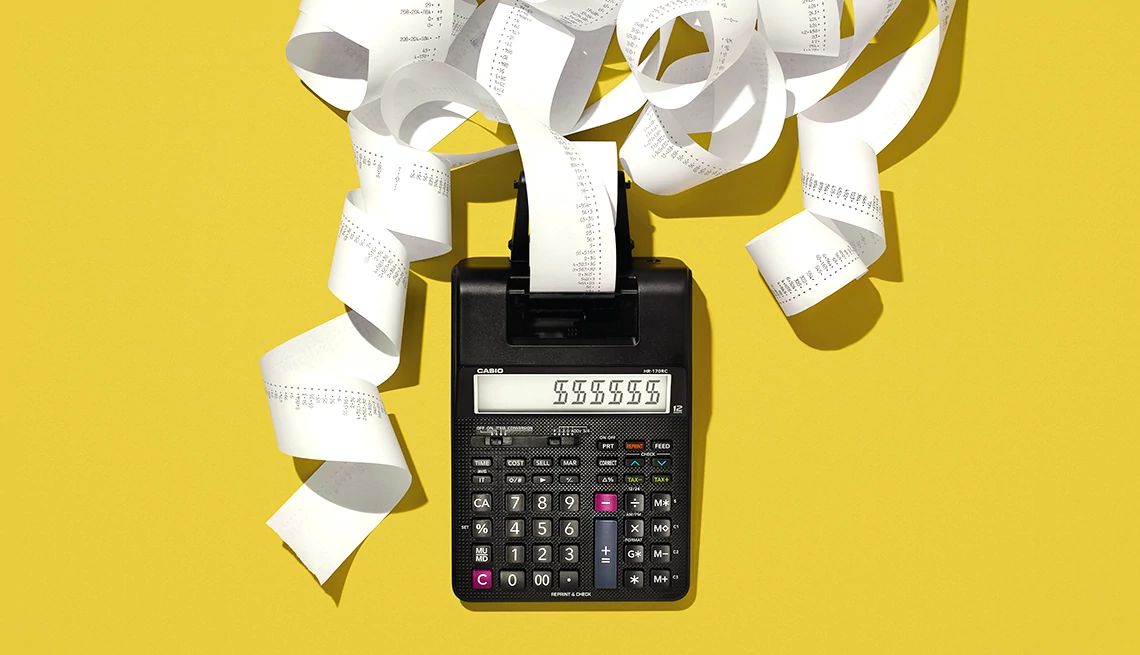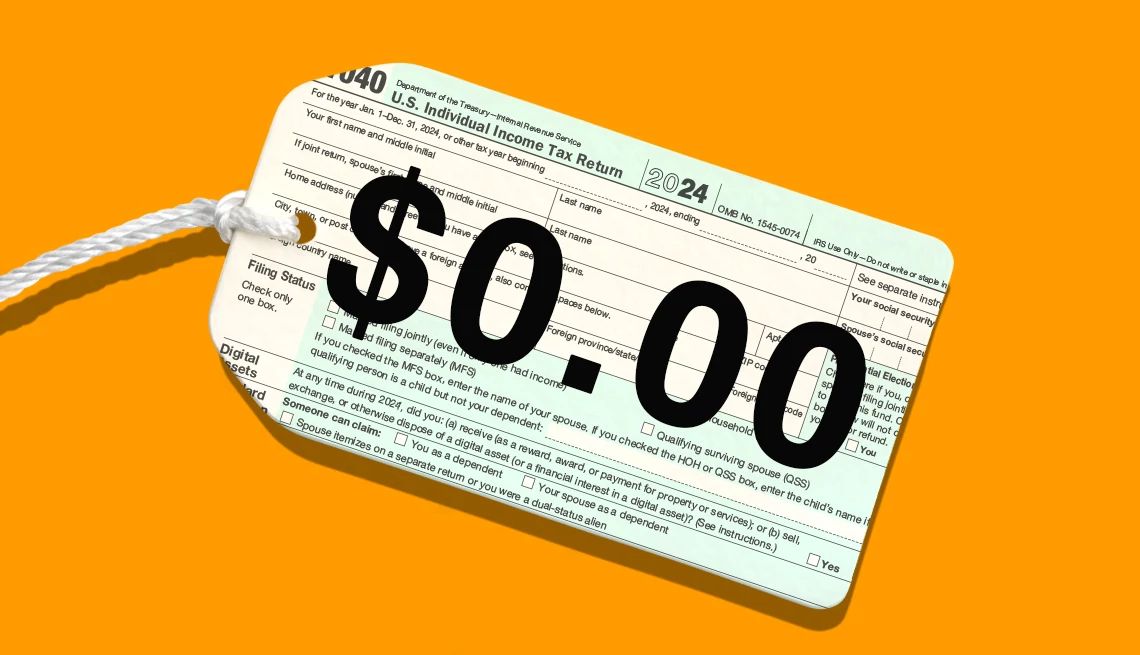AARP Hearing Center
1040 Tax Calculator
Estimate your taxes with AARP's federal tax calculator
Change the information currently provided in the calculator to match your personal information and view your results.
Editor’s note: This calculator provides an estimate for tax year 2025, which is filed in 2026.
AARP Tools & Calculators for Your Life
Free tools to help you better manage your finances, your health, caring for a loved one and planning for retirement.
How does the tax calculator work?
The tax calculator gives an estimate of the tax you owe on income earned in 2025. The next federal income tax filing deadline is Wednesday, April 15, 2026. (In tax parlance, that is the 2026 filing year and the 2025 tax year.)
How do tax brackets work?
If you are in the 22 percent federal tax bracket, you don’t pay 22 percent of your entire income to Uncle Sam. Federal taxes are graduated, meaning you pay different rates on different amounts of taxable income. There are seven tax brackets in all.
You may notice we’re talking about taxable income above. Taxable income is what you’ve earned minus deductions.
Deductions are expenses that you’re allowed to subtract from your taxable income, which is what you’ll find in box 1 of your W-2 form. (If you’re self-employed, your taxable income is all the money you’ve received for doing your work minus eligible business expenses.) You also owe income taxes on certain other income, such as interest from bank accounts, which is reported on Form 1099-INT, as well as dividends and capital gains, which are also reported on Form 1099.
Most people take the standard deduction, which is available to all taxpayers. Single taxpayers can deduct $15,750 from their gross income, up from $14,600 the previous year. A person with $65,000 in gross income, for example, can reduce their taxable income to $49,250. The standard deduction for couples filing jointly in 2025 will rise to $31,500, up from $29,200 the prior year.
You should figure out your itemized deductions before you decide to claim the standard deduction. The tax law lets you deduct a myriad of expenses, two of the most common of which are mortgage interest and medical/dental expenses. If you have a large mortgage or big medical bills, it may be worthwhile to itemize your deductions.
A few deductions are called above-the-line deductions, which means you can claim them even if you take the standard deduction. These include teacher expenses, contributions to health savings accounts, part of your self-employment tax, health insurance premiums, alimony payments and contributions to traditional individual retirement accounts (IRAs).
They’re great, that’s what they are. A tax deduction lowers your taxable income, which lowers your tax bill. A tax credit reduces your tax bill dollar for dollar. If you owe $600 in taxes and qualify for a $500 tax credit, your tax liability falls to $100. Normally, you can take a credit only for as much as you owe. For example, if you qualify for a $500 credit and have a $300 tax bill, you can only reduce your bill to zero.
There are a few exceptions to that rule. Refundable tax credits, such as the Earned Income Tax Credit (EITC), can not only reduce your tax bill but also turn a bill into a refund. Say you owe the IRS $600 in taxes. A $700 refundable tax credit would turn your $600 bill into a $100 tax refund.
Explore Tax Articles


AARP Membership — $15 for your first year when you sign up for Automatic Renewal
Get instant access to members-only products and hundreds of discounts, a free second membership, and a subscription to AARP the Magazine.






































































